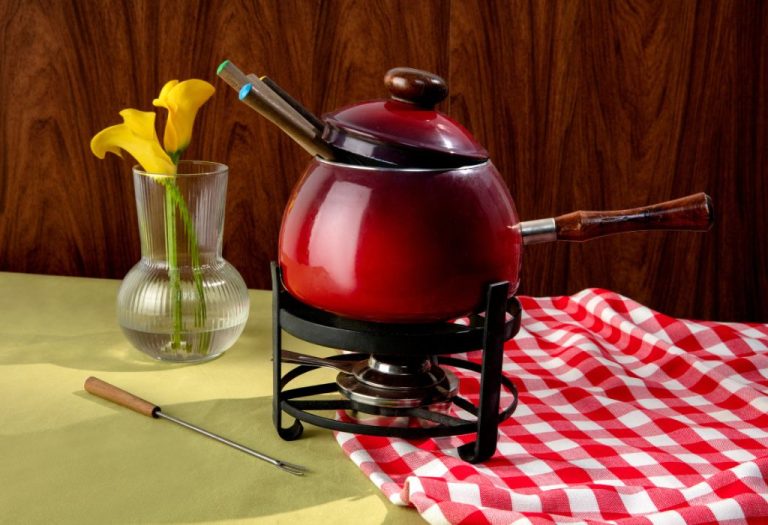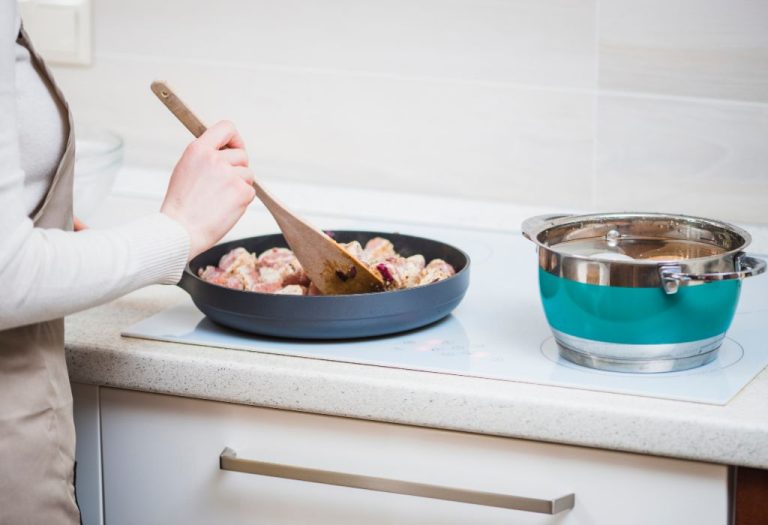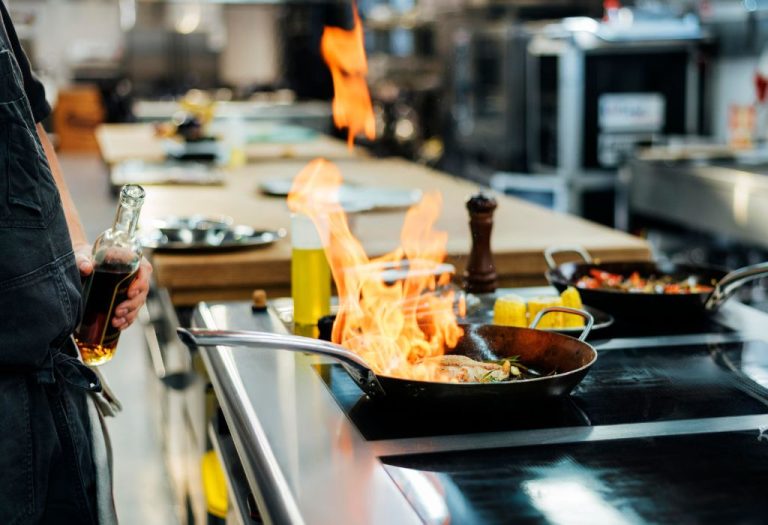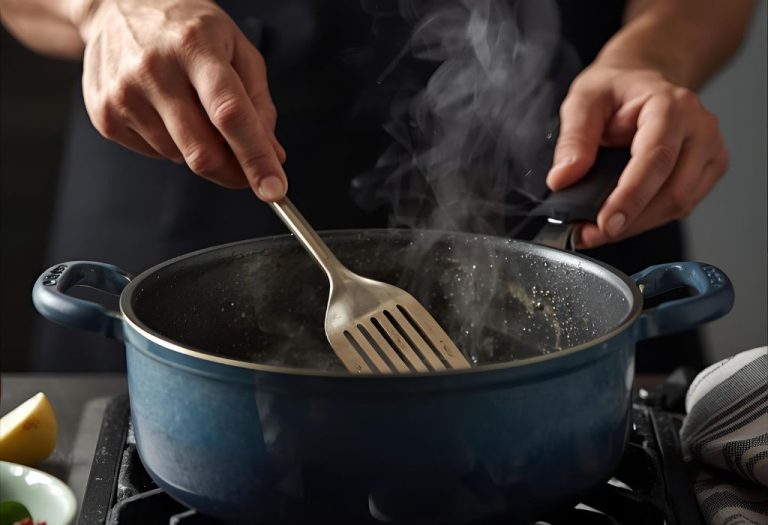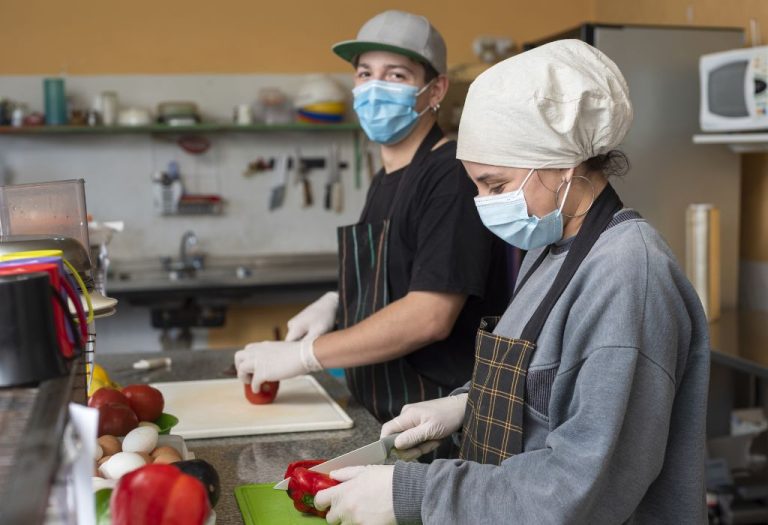Modern kitchens often showcase cookware that promises more than just utility. Ceramic-coated pots and pans claim to deliver a combination of health safety, performance, and aesthetic appeal.
Among these, Caraway ceramic cookware has captured attention for its sleek design and bold non-toxic marketing. But with growing popularity comes a crucial question: Is Caraway ceramic cookware truly safe for long-term use?
The debate arises because cookware safety depends on several factors: materials used, heat resistance, coating integrity, and durability over time. Caraway’s branding emphasizes its commitment to health, with coatings free from PTFE, PFAS, PFOA, lead, and cadmium.
Independent testing has so far supported these claims, showing no leaching of heavy metals or harmful chemicals when used under recommended conditions.
What Defines Caraway Ceramic Cookware?
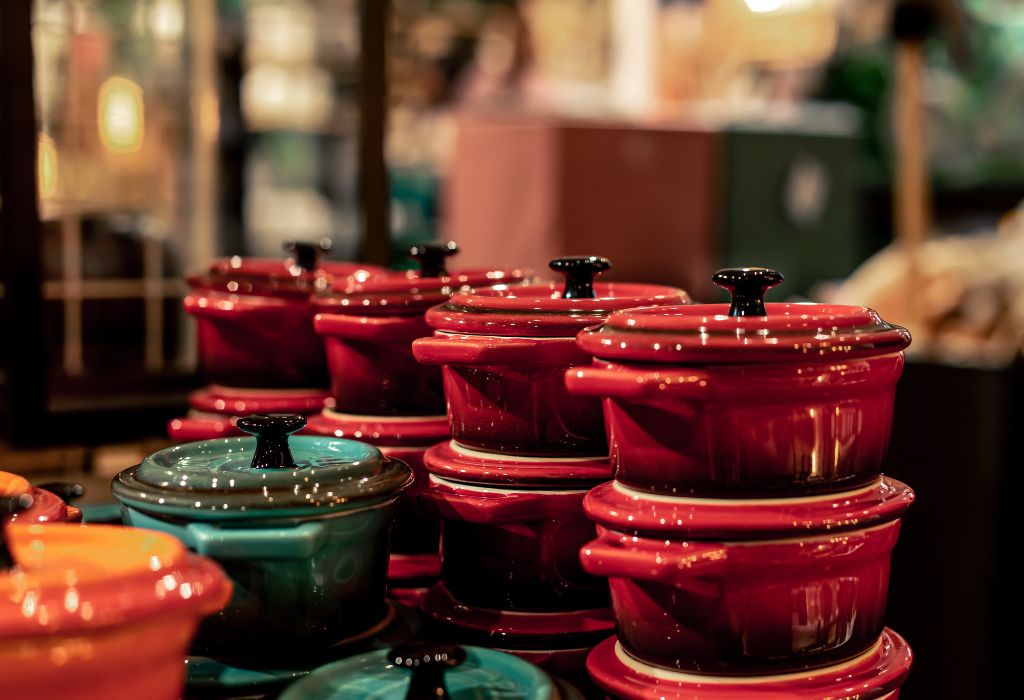
Caraway cookware combines modern engineering with traditional ceramic principles. At its core, the pans feature an aluminum base for even heat distribution, coated with a mineral-based ceramic layer that provides the non-stick properties. This ceramic coating is made using a sol-gel process, where silica-derived materials form a smooth, durable surface without using synthetic polymers like PTFE or PFOA.
The company emphasizes eco-friendly production methods, with coatings cured at lower temperatures than those required for Teflon, reducing energy consumption during manufacturing. Additionally, the cookware includes stainless steel handles and bases, providing strength while ensuring compatibility with a variety of stovetops, including induction.
This construction delivers a balance between functionality and safety. The non-toxic claim stems from the fact that ceramic coatings are inorganic, meaning they do not emit the chemical fumes associated with older non-stick technologies when overheated.
Caraway’s materials have also undergone third-party testing for heavy metals like lead and cadmium, substances that once plagued low-quality ceramic imports. These certifications give consumers confidence that the cookware meets modern food-safety standards.
The Science Behind Safety
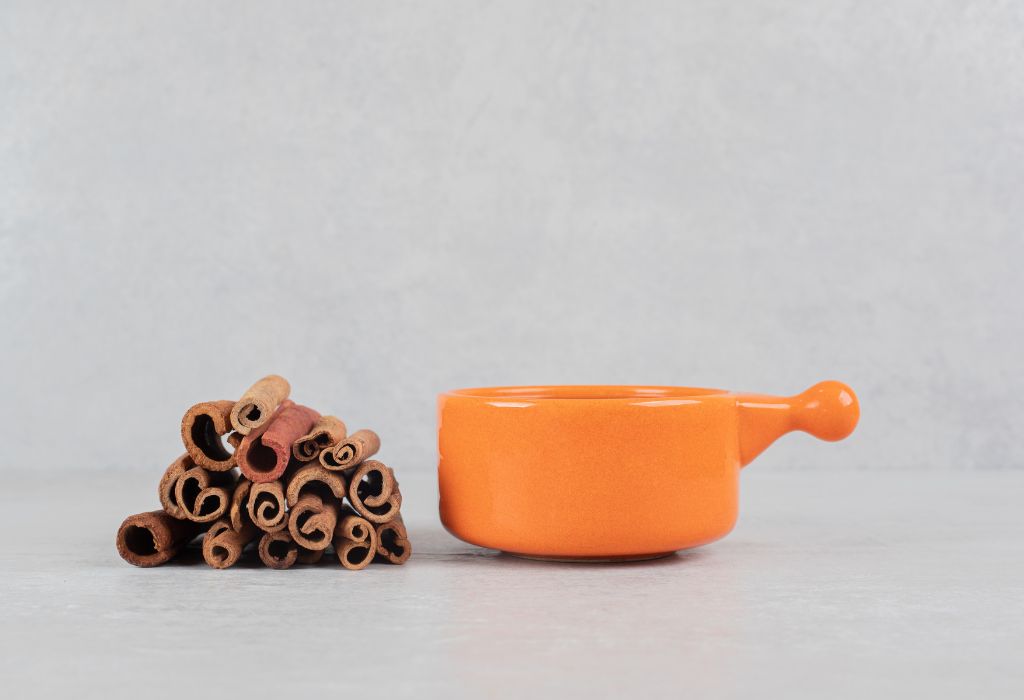
The key to evaluating whether Caraway ceramic cookware is safe lies in understanding both its chemical composition and heat behavior.
Unlike traditional non-stick coatings based on PTFE, which can degrade at high temperatures and release harmful fumes, ceramic coatings are made from silicon dioxide—the same compound found in glass and sand.
When cured, this creates a non-reactive, inert surface that resists chemical interaction with food, even under heat.
Laboratory tests have confirmed that Caraway’s coating contains no detectable lead, cadmium, or perfluorinated compounds, which have been linked to health hazards in older cookware technologies. This ensures that under normal cooking conditions, the surface remains stable and non-toxic.
However, like most ceramic coatings, the material has limitations. Studies show that excessive heat—typically above 500–600°F—can cause micro-cracking over time, reducing the coating’s smoothness and non-stick properties.
While this does not release toxins, it does shorten the cookware’s effective lifespan, particularly in pieces like frying pans that endure high-heat searing.
From a regulatory perspective, Caraway cookware aligns with safety standards established by agencies such as the FDA and California’s Proposition 65, both of which set strict limits on contaminants in food-contact products.
These certifications, combined with independent testing, indicate that Caraway ceramic cookware is indeed safe when used as intended.
Long-Term Performance and Durability

Safety is only one side of the equation; durability over years of use determines whether a product remains practical for families and professionals alike.
In consumer reports and professional reviews, Caraway cookware consistently earns praise for initial performance, especially its slick non-stick surface and ease of cleaning.
Users often note that foods like eggs and pancakes slide off effortlessly with minimal oil, reducing fat consumption and simplifying cleanup.
Over time, however, ceramic coatings naturally wear down. Professional chefs and long-term home users report that while saucepans and Dutch ovens maintain performance for many years, frying pans may begin losing their non-stick qualities after two to three years.
Particularly if exposed to high heat or metal utensils. This pattern is not unique to Caraway; it reflects the inherent properties of ceramic coatings across brands.
The aluminum core retains excellent heat distribution throughout the cookware’s lifespan, preventing hotspots and promoting even cooking. Stainless steel handles remain sturdy, resisting loosening or warping even with frequent stovetop-to-oven transitions.
Overall, while Caraway ceramic cookware performs admirably for long-term use, it requires careful handling to preserve its coating and maintain its safety credentials.
Best Practices for Safe, Long-Term Use
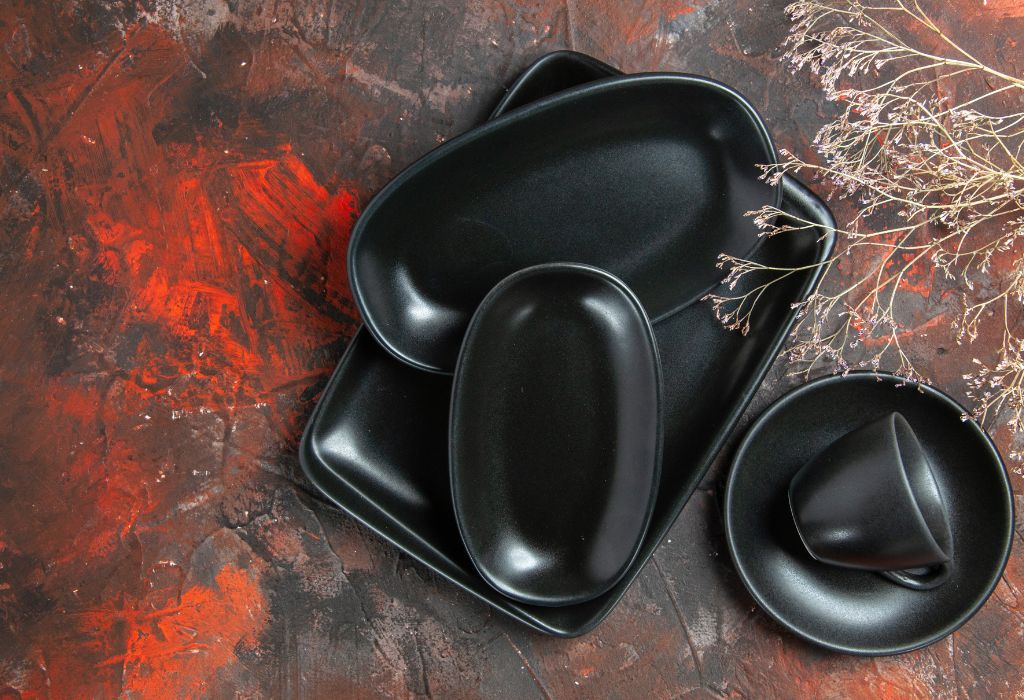
Proper use and maintenance significantly influence both the safety and longevity of ceramic cookware. Experts recommend keeping stovetop temperatures at low to medium heat whenever possible.
Unlike cast iron or stainless steel, ceramic-coated cookware does not benefit from extreme temperatures, which only accelerate coating wear without improving cooking results.
Utensil choice matters greatly. Wooden, silicone, or plastic utensils prevent scratches that compromise the coating’s smoothness. Metal utensils, in contrast, can gouge the surface, creating weak points where deterioration begins sooner.
Cleaning practices also affect performance over time. Hand washing with soft sponges and mild detergents preserves the non-stick layer far better than abrasive pads or harsh dishwasher cycles.
Even though some brands label ceramic cookware as dishwasher safe, repeated high-temperature washing and detergent exposure often shorten coating lifespan.
Finally, storage methods play a role. Stacking pans without protective layers leads to friction that can chip or wear surfaces. Using pan protectors or storing cookware separately prevents unnecessary damage, ensuring both safety and aesthetics last longer.
How Caraway Compares to Other Cookware Types
To fully evaluate Caraway ceramic cookware, it helps to compare it with stainless steel, cast iron, and traditional non-stick alternatives.
- Versus stainless steel: Caraway offers easier cleaning, lighter weight, and reduced oil requirements. Stainless steel, however, outperforms ceramic in sheer durability, often lasting decades without surface degradation.
- Versus cast iron: Caraway avoids the heavy weight and maintenance demands of cast iron, which requires seasoning and careful drying to prevent rust. Yet cast iron handles extremely high heat and, when seasoned properly, delivers a naturally non-stick surface that improves with age.
- Versus traditional non-stick (Teflon): Caraway eliminates concerns about PFAS and PFOA chemicals entirely. Older Teflon pans, when overheated, could release toxic fumes, while modern PTFE coatings, though improved, still rely on synthetic polymers. Caraway’s ceramic surface offers peace of mind for health-conscious buyers.
Ultimately, Caraway provides a middle ground: safer than Teflon, easier to handle than cast iron, and more beginner-friendly than stainless steel.
The trade-off lies in longevity, as ceramic coatings seldom match the decades-long lifespan of stainless or well-maintained cast iron cookware.
Future Outlook: Innovations in Non-Toxic Cookware
The cookware industry continues evolving toward safer, eco-friendly technologies. Emerging ceramic coatings infused with titanium or diamond particles promise longer lifespans while maintaining non-toxic properties. Some companies are exploring hybrid surfaces combining ceramic with durable metals to address the wear issues inherent in current coatings.
Caraway itself may benefit from these innovations, potentially introducing thicker or reinforced ceramic layers for improved longevity.
Additionally, sustainability trends push manufacturers toward recyclable materials and energy-efficient production methods, aligning cookware safety with environmental responsibility.
As consumer demand grows for healthy, toxin-free cooking solutions, the market will likely deliver products that combine the safety of ceramic coatings with the durability of traditional cookware materials.
Conclusion
Caraway ceramic cookware is safe for long-term kitchen use, thanks to its non-toxic coating, independent safety testing, and strong design. It does, however, require proper care—keeping heat moderate, handwashing, and using gentle utensils.
For best longevity, focus on sauce pans and Dutch ovens, which maintain performance over time. Frying pans may need replacement every few years if scene-treated as daily workhorses.
Families looking for a stylish, toxin-free, and functional cooking set will find value in Caraway. With mindful usage, this ceramic line delivers safe, reliable performance and elevates both kitchen aesthetics and health.
I’m Emma J. Caldwell, the founder, lead writer, and home-cooking enthusiast behind KitchenGuideCo.com. With a background in culinary arts and over a decade of cooking experience in both professional and personal kitchens, I created this platform to demystify recipes, offer smart kitchen gadget reviews, and guide readers through meal prep with confidence and clarity.


